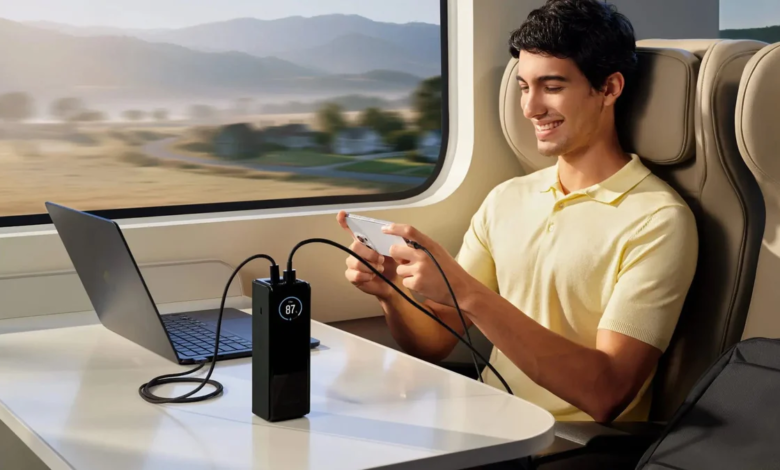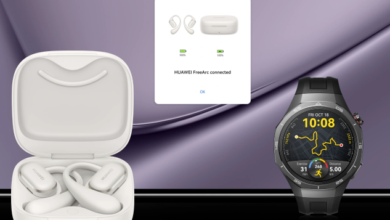Gaming on the Go: Power Bank Requirements for Handheld PCs and Consoles

A power bank is the silent MVP for gamers who stream AAA titles on a Steam Deck during commutes or grind ranked matches on a Nintendo Switch between flights. Without a reliable reserve of mobile energy, sudden shutdowns can erase progress, corrupt saves, and cut live‑streams short. This article unpacks exactly which power bank specifications keep handheld PCs and consoles running at full frame rate, how to size capacity for marathon sessions, and what safety rules govern high‑wattage packs in 2025’s travel landscape.
Why Handheld Gaming Demands Serious Power
Portable consoles cram desktop‑class processors and vivid 7‑inch displays into travel‑size shells, but that leap in performance devours battery life. The Steam Deck and ROG Ally can draw 15–28 W continuously when rendering modern shooters, meaning their internal batteries dive from 100 percent to single digits in 90 minutes. A gamer who competes online or captures gameplay footage needs uninterrupted juice, and a dependable power bank bridges that gap without input lag or thermal throttling.
Beyond raw wattage, gaming loads fluctuate wildly: menu screens sip 9 W while boss fights spike to 30 W. This variability stresses a console’s power circuitry, so a power bank must sustain transient peaks without collapsing voltage. USB‑C PD 3.1 with 28 V/5 A capability smooths those surges, ensuring the console never downshifts clock speeds mid‑battle. Selecting a power bank that holds voltage above 19 V at bursts of 3 A is therefore crucial for smooth frame pacing and competitive advantage.
Calculating Real‑World Watt‑Hour Needs for Extended Play
Start with the console’s average draw. A Steam Deck at 15 W for three hours burns 45 Wh. Add 10 Wh for Bluetooth audio and USB accessories, plus 10 percent conversion losses, and the session total reaches roughly 61 Wh. Multiply by desired sessions between wall plugs—say two evening rounds on a weekend trip—and capacity should clear 120 Wh. That translates to around 32 000 mAh at 3.7 V cell voltage. Flight regulations cap carry‑on lithium energy at 100 Wh, so travelers often compromise with a 90 Wh, 25 000 mAh power bank and top up during layovers.
Factor in display brightness and Wi‑Fi throughput: max luminance on an OLED Switch adds 3 W, while 6 GHz Wi‑Fi 7 downloads can spike another 4 W. Spreadsheet the worst case, then add a 15 percent buffer. Remember that cold cabins reduce lithium capacity; a power bank rated 96 Wh at room temperature may deliver only 80 Wh at 10 °C. Budget extra margin if you game on alpine trains or red‑eye flights.
Key Power Bank Specs: Capacity, Output, and Protocols
Capacity is only the headline. Look deeper at sustained output. Handheld PCs accept 20 V input for best efficiency; pick a power bank supporting 65 W PPS or fixed 20 V/3.25 A PD profiles. Verify that advertised wattage is available on the same port used for charging; some banks advertise 140 W but split that across two ports, starving single‑port devices. A dedicated gaming power bank should boast 18 mΩ or lower internal resistance and less than 3 percent voltage droop at full load.
Protocol compatibility matters for legacy consoles. The Nintendo Switch negotiates legacy PD at 15 V/2.6 A; choose a power bank with explicit Switch or “Trick‑Charge” mode to avoid OS charging lockouts. GaN‑based boost converters inside premium banks run cooler, keeping shell temperatures under 45 °C even during 87 W continuous discharge—comfortable for lap gaming sessions. Finally, look for pass‑through charging so solar panels or wall chargers refill the power bank while it powers the console, essential for multi‑day LAN festivals.
Thermal and Size Considerations for Gamers on the Move
A power bank that scalds your palm mid‑match is unusable. Aluminum chassis dissipate heat faster than plastic, lowering surface temps by up to 6 °C under identical load. Rounded edges slide into sling bags beside controllers without snagging cables. Weight matters too; a 30 000 mAh pack can exceed 650 g, tilting shoulder straps and overshooting airline personal‑item limits. Balance heft against session length: casual commuters can settle for a 20 000 mAh, 380 g power bank, while e‑sports vloggers may justify the extra grams for uninterrupted 4K capture.
Cable routing influences ergonomics. Short right‑angle USB‑C cables prevent strain on console ports and keep hands clear during tabletop mode. Some gamers velcro a slim power bank to the back of the Steam Deck grip, creating a self‑contained unit; choose a model under 20 mm thick for that mod. Thermal pads or silicone bumpers between power bank and console also dissipate residual heat, safeguarding both devices.
Flight and Safety Regulations for High‑Capacity Packs
The International Civil Aviation Organization limits spare lithium‑ion batteries in carry‑on luggage to 100 Wh each. Most airlines interpret this strictly, though some allow two units up to 160 Wh with prior approval. Always print capacity labels: a clear “96 Wh” sticker averts security delays. Tape exposed USB pins with electrical tape to prevent short circuits, and store the power bank in the cabin, never checked bags.
Regulations in 2025 require smart power banks above 20 000 mAh to feature battery‑management microcontrollers that log temperature and current. Some airports scan QR codes on the shell to verify compliance. Buying a certified model today saves headaches tomorrow. For cross‑border tournaments, keep specification sheets in your carry case; customs staff may request proof that watt‑hour ratings meet local limits.
Maintenance Tips to Preserve Gaming Performance
Longevity hinges on cycle management. Recharge the power bank once it dips to 25 percent rather than waiting for auto‑shutdown; shallow cycles double lifespan compared with deep drains. Store the pack at 60 percent when you shelve the console for exam season, and top up every four months. Clean USB‑C ports with compressed air to maintain snug resistance readings and prevent handshake failures during firmware updates.
Firmware monitoring via companion apps alerts you when cell voltage imbalance exceeds 50 mV. Calibrate by running one full discharge–charge cycle quarterly. Replace braided cables after 1 000 bends to avoid intermittent power drops that could crash a game mid‑save. Following these practices ensures the power bank delivers rated wattage even after 500 recharge cycles, keeping victory screens glowing for years.
Conclusion: Build Your Ultimate Mobile Gaming Kit
Selecting the right power bank transforms handheld gaming from a race against a draining battery into a seamless, immersive experience. Choose a capacity that covers your worst‑case watt‑hour math, insist on high‑wattage USB‑C PD profiles, and prioritize thermal efficiency. Respect flight regulations, maintain shallow cycles, and your gaming rig will stay charged through tournaments, commutes, and couch‑coop marathons alike.





